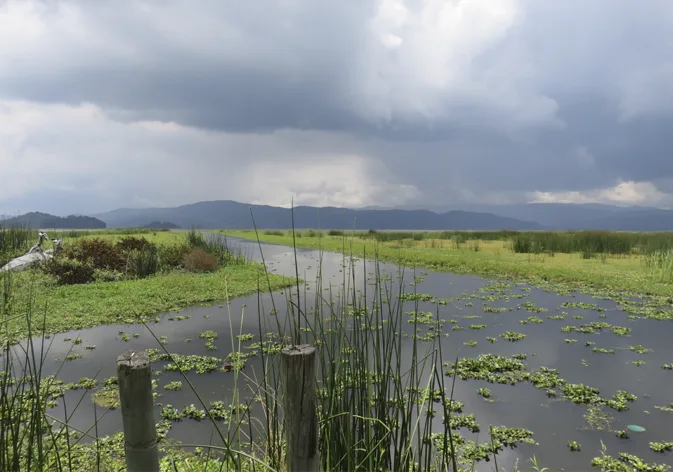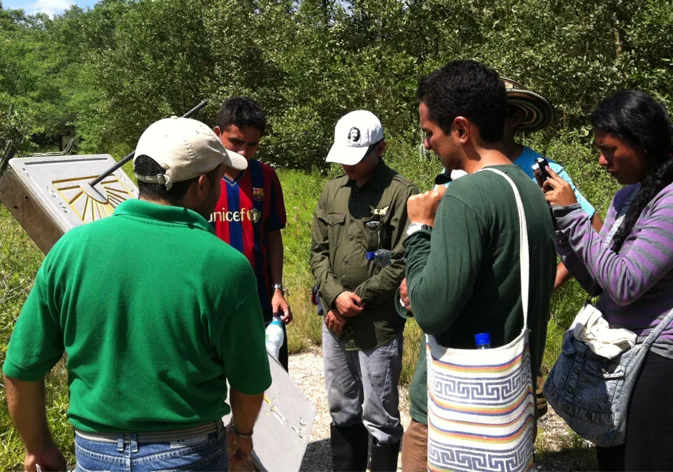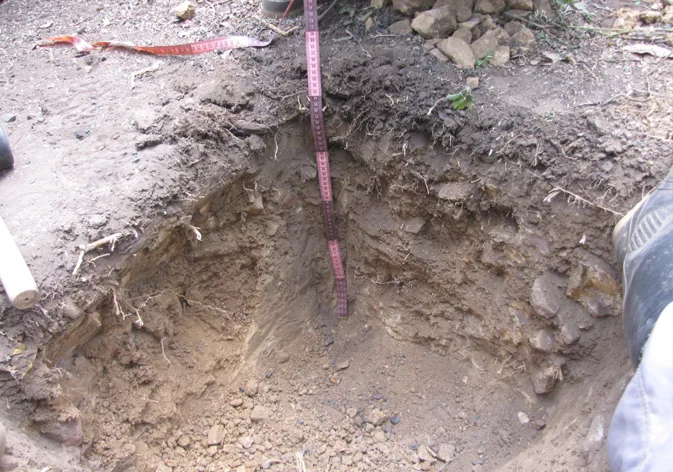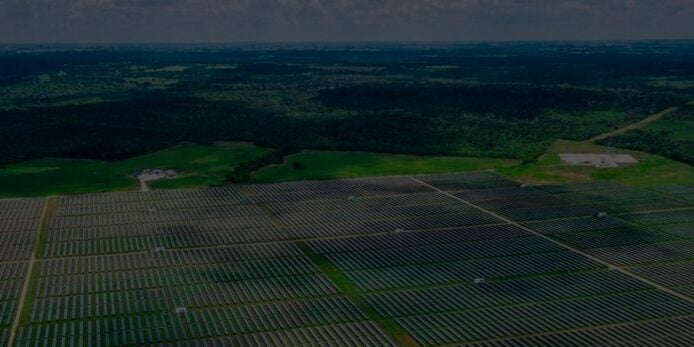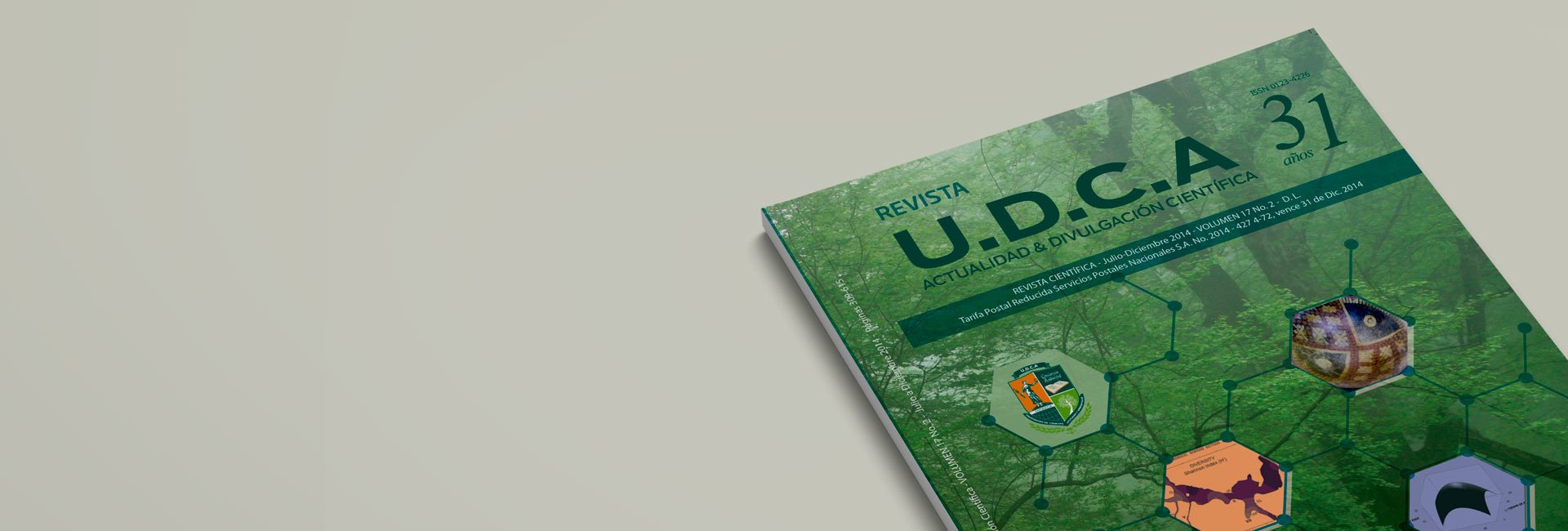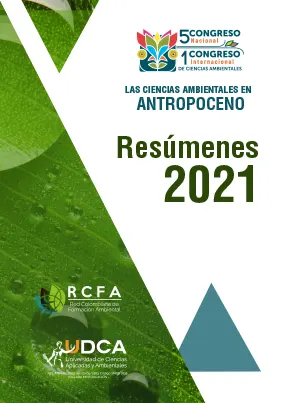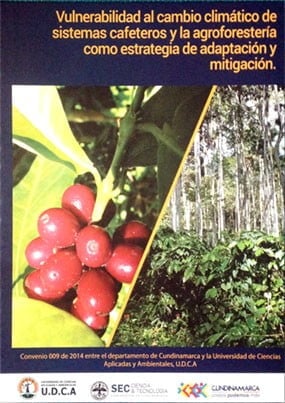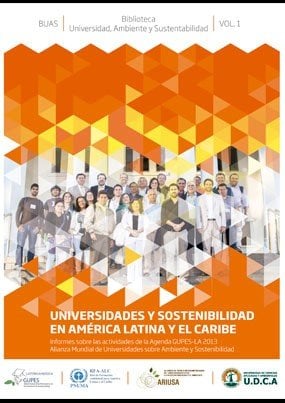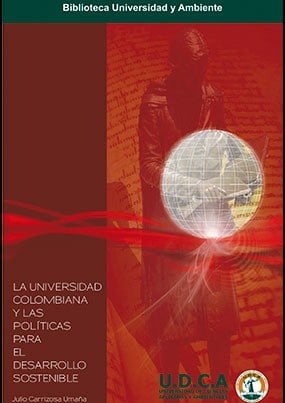
Title Obtained: Technologist in Environmental Analysis
Level of training: Technological
SNIES Code: 103212
Qualified Registration: Resolution 014446 of August 10, 2021, granted by MINEDUCATION.
Total Credits: 70
Duration in Academic Periods: 5 Semesters (2.5 years)
Mode: Classroom
Number of Credits I Semester: 14
Credit value Year 2024: $ 271.000
Tuition Cost I Semester Year 2024: $ 3.794.000 *
Academic Space: Calle 222 # 55 – 37
Contact: Oscar Luis Pyszczek.
Phone: (60 1) 6684700, extension: 207 – 160
E-mail: [email protected]
The tuition fee from the second academic semester onwards will depend on the number of academic credits enrolled.
We are a University with High Quality Institutional Accreditation: Resolution 017390 of December 27, 2019 (for 4 years), granted by MINEDUCATION.
¡STUDY TECHNOLOGY IN ENVIRONMENTAL ANALYSIS AT U.D.C.A.!
Become a Technologist in Environmental Analysis with a solid technological foundation in order to facilitate the equitable and sustainable development of the country, transform your environment and contribute to the construction of a better future. You will have access to our laboratories, field trips, and national and international agreements for internships.
Mission
The Environmental Sciences Program seeks to train Environmental Analysts, with a solid technological foundation with a view to facilitating the equitable and sustainable development of the country.
Vision
The Environmental Analysis Technology Program will be recognized for the formation of technologically qualified Environmental Analysts, with a solid environmental vision that will contribute to local, regional and national socioeconomic and sustainable development.
Graduate profile
The technologist in Environmental Analysis understands socio-ecological systems, collects, processes, evaluates and analyzes ecological and social data, which allows him/her to plan and manage processes to solve environmental problems, through the application of tools and technologies that contribute to sustainability.

OUR RESEARCH GROUPS IN TECHNOLOGY IN ENVIRONMENTAL ANALYSIS
OUR MAGAZINES AND PUBLICATIONS OF TECHNOLOGY IN ENVIRONMENTAL ANALYSIS
Environmental Sciences in the Anthropocene - Abstracts 2021
The 5th National and 1st International Congress of Environmental Sciences is an event that the Colombian Network of Environmental Education holds every two years and has brought together more than 980 students, professionals, academics and researchers interested in contributing to the development and epistemological consolidation of Environmental Sciences, based on the reflection about paradigms, their objects of study, methods and challenges in the face of new realities. In this version, the central theme is “Environmental Sciences in the Anthropocene”, taking into account that human-induced changes in the Earth’s surface, oceans, cryosphere, ecosystems and climate are so great and rapid that the proposal of a new geological epoch has emerged. In this Congress, answers to this situation are sought that can reverse the pattern, in which “human prosperity” has harmed ecosystems and excluded communities. The book incorporates the abstracts of the inaugural and central conferences, as well as the abstracts of the oral presentations and posters of each of the defined thematic axes, to address the theme “Environmental Sciences in the Anthropocene”.
Floristic Catalog. Manual of Representative Trees and Shrubs of the U.D.C.A.
The Floristic Manual Catalog of representative trees and shrubs of the U.D.C.A. synthesizes, in a clear, simple and pleasant way, the effort and work done by the Institution and its community throughout these years. This work constitutes the first identification guide
of the plant species of the Campus and seeks to inspire future generations of students of the different environmental programs of the University to use this academic space as a Living Classroom for training and research. It contains a brief description of the basic characteristics of the flora species, which will allow their identification through cataloging cards.
Climate change vulnerability of coffee systems and agroforestry as an adaptation and mitigation strategy.
This text is the result of the University – State relationship that, under the Agreement 009 of 2014, signed between the Department of Cundinamarca and the U.D.C. A and approved by the Collegiate Body of Administration and Decision -OCAD- of the Science, Technology and Innovation Fund of the General System of Royalties, it was possible to develop research and social appropriation processes, which contributed to the sustainable development of the study area: Cundinamarca and its municipalities Pacho, San Juan de Rioseco and Tibacuy and allowed estimating its vulnerability to climate change of coffee systems, proposing, as a measure, the adoption of agroforestry systems. It had the participation of the CAR of Cundinamarca and the Corporación Latinoamericana Misión Rural.
Step-by-step research - Second edition
Today, after 11 years of practice of the mentioned work and under the title Investigación paso a paso, the author updates, incorporates new chapters and revises concepts, all this, product and consequence of her research tasks and practices and of the logical evaluation of this task, in our University. It is also pertinent to point out that the text refers to and merges the new requirements issued by COLCIENCIAS – Publindex, in the sense of approaching, correctly, a research project, either by research groups, young researchers and seedlings, with the logic that leads to its successful execution, to a possible co-financing by State entities or private collaboration and to its future dissemination, at national or international level.
Universities and sustainability in Latin America and the Caribbean
The cooperation agreement forged with the Alianza de Redes Iberoamericanas de Universidades por la Sustentabilidad y el Ambiente (ARIUSA), within the framework of the UNEP Environmental Training Network for Latin America and the Caribbean, as well as the initiative, also of this organization to promote from November 2012 the Global Universities Partnership on Environment and Sustainability (GUPES) as far as its Latin American chapter is concerned, is progressively bearing fruit. The good wishes expressed in the agreement signed between the Universidad de Ciencias Aplicadas y Ambientales U.D.C.A. of Colombia and UNEP, together with ARIUSA, are materializing in concrete results such as those shown in this publication. In the book, the first steps aimed at disseminating the status of universities in the region to integrate environmental and sustainability considerations in teaching, research, community participation and daily campus management, as well as to increase and improve student participation in activities related to sustainable development inside and outside the universities, are collected and described.
Diversity and ecosystem services of the tropical dry forest
The Universidad de Ciencias Aplicadas y Ambientales U.D.C.A. in its commitment to academic excellence, strives to generate, transfer and apply knowledge in the service of sustainable human development, locally, regionally, nationally and internationally. It also leads scientific research processes, which seek to contribute to the resolution of problems of various kinds, especially in what has to do with our society and its relationship with the environment. Under this concept, the results of the Research Project “Diversity and Ecosystem Services of the Dry Tropical Forest of Alto Magdalena (Colombia)” were presented, a study carried out with the collaboration of the Ecosystems and Sustainability Research Institute of the National Autonomous University of Mexico and the Colombian Oil Company ECOPETROL. Aware that the ecosystem under study is one of the least known and most threatened in the country and, for this and other reasons, the present work was considered of greater importance, the results of which will serve to make timely decisions regarding the recovery, conservation and sustainable use of the Tropical Dry Forest.
Climatology of the Colombian Amazon
In order to build a relevant and updated text and to establish itself as an information and consultation tool to determine the Climatology of the Colombian Amazon, it was necessary to carry out an in situ research, which allowed analyzing data from more than 52 observation areas, with meteorological information, such as monthly average precipitation, average air temperature, solar brightness, average air speed, evaporation, relative humidity and cloudiness, applying current methodologies for the temporal analysis of each of the climatic parameters. The text first describes the process of information processing and determination of representative indicators and the construction of histograms; then, the procedure for the elaboration of annual and decadal precipitation isolines, the elaboration of water balances and the determination of climate types; and finally, a description of the results obtained, accompanied by illustrations and cartography.
Biodiversity in a corner of the northern edge of Bogota
Biodiversity in a corner of the northern edge of Bogota highlights the importance of knowing the organisms present in order to achieve their conservation and for society to get involved in defending their existence, due to the important role they play in the propagation of life on which human beings depend. Cities should be friendly spaces, since life is interdependent and every plant, insect, bird and mammal, large or small, not only those discussed in this work, is contributing to the harmonious existence of nature. In this work, essentially environmental, the participation of students stands out, who with enthusiasm and constancy already show achievements that ensure initiatives to generate knowledge, through research and environmental education. The free spaces of the University and its surroundings are permanent laboratories, where professors can create work teams with students and develop projects that have an impact on society, with the contribution of information. It is hoped that this book will contribute to raise awareness about the existence of other organisms and to conserve them, together with the ecosystems where they develop, such as the wetlands, their area of influence, the high Andean forest and human conservation initiatives, as is the case of the living fences and the dividers of 222nd Street and the North Highway, so that the city makes them part of its environment and they contribute to the maintenance of life and knowledge, being spaces for recreation, culture, education and environmental research.
Higher environmental education 1948 - 1991
This book gathers a research on the first stages of higher environmental education, covering the period 1948-1991. The author offers a documentary memory of the beginning of a “crusade” in favor of a renovation of the educational system, inscribed within a process of world transformations, which would come to pose a radical challenge on the sustainability of our human world. This not only questioned economic rationality and models of democratic governance, but also posed, from the outset, the need to review -from their foundations- the bases of knowledge and rationality of modernity, which had led to an environmental crisis. This implied questioning the ways of thinking, the theoretical structures and the modes of production and transmission of knowledge, leading to a review of the educational and professional training programs that make up the education systems through which human beings are formed, who in their daily actions – as rulers, businessmen or citizens – are inscribed in the designs and destinies of humanity.
Higher environmental education in Latin America: Epistemological and curricular challenges.
Research is focused on formal higher environmental education at the postgraduate level, since this level is considered an important link in the construction and reproduction of knowledge. Strikingly, it is a topic that has not been studied much, although there are many more works on environmental education aimed at primary and basic levels, as well as at non-formal environmental education. This lack of attention is problematic, since it is at the University, where there is a considerable and important space to think of new alternatives and put them at the service of society. Concretely, this research proposes, through a set of epistemological and historical reflections and an empirical analysis, to contribute elements, both to the epistemological foundation and to the formulation of guidelines and recommendations; the latter, oriented to promote the environmental curricular process in universities. In addition, this work is conceived and proposed from and for Latin America, since it is considered essential to continue promoting an environmental thinking of its own, capable of proposing adequate proposals to the socio-cultural context of the region. Environmental education is conceived as training for critical thinking and as a constructive and supportive attitude that permeates all areas of social action with effects on the natural environment. This book is mainly addressed to directors and professors in charge of designing environmental postgraduate programs, as well as to teachers interested in thinking about their respective subjects from an environmental perspective. But it is also addressed to people interested in environmental education in general, who wish to review theoretically different approaches to environmental education. Finally, it can be said that the theoretical-epistemological reflections made in this book undoubtedly lead to think about the environmental problem.
The Colombian university and policies for sustainable development
In Colombia, during the last twenty years, the concept of sustainable development has been introduced with unusual force in constitutional and legal texts, in policies, in development plans, in political discourse and, naturally, in university classrooms. Many of these processes are driven by institutions of higher education or by university professors acting individually. In the face of the attraction of sustainable development, the concepts of environment and environmental protection lose validity and even come to be considered as contradictory to what is understood by sustainable development or sustainability. The text opens a space for discussion on sustainability and its current situation, which has been the controversy itself, and warns that the massive launching of the concept of sustainable development and its immediate acceptance by several governments generated confusion, as well as the evident failure of several attempts at operationalization, which led, once again, to a feeling of frustration.
Use and Handling of Environmental Instruments
This text provides the practical and theoretical foundations for sampling, measuring, monitoring and evaluating natural resources and for handling the available tools that allow an adequate presentation of the results of control and follow-up visits, diagnostics, preparation of dossiers, inventories and planning of natural resources and, in general, of environmental and ecological studies. Provides knowledge and handling of the most frequently used equipment and instruments in the geographic, hydrological, atmospheric, edaphic and environmental fields, to make up for deficiencies and satisfy practical needs in the field of technical environmental evaluation.












